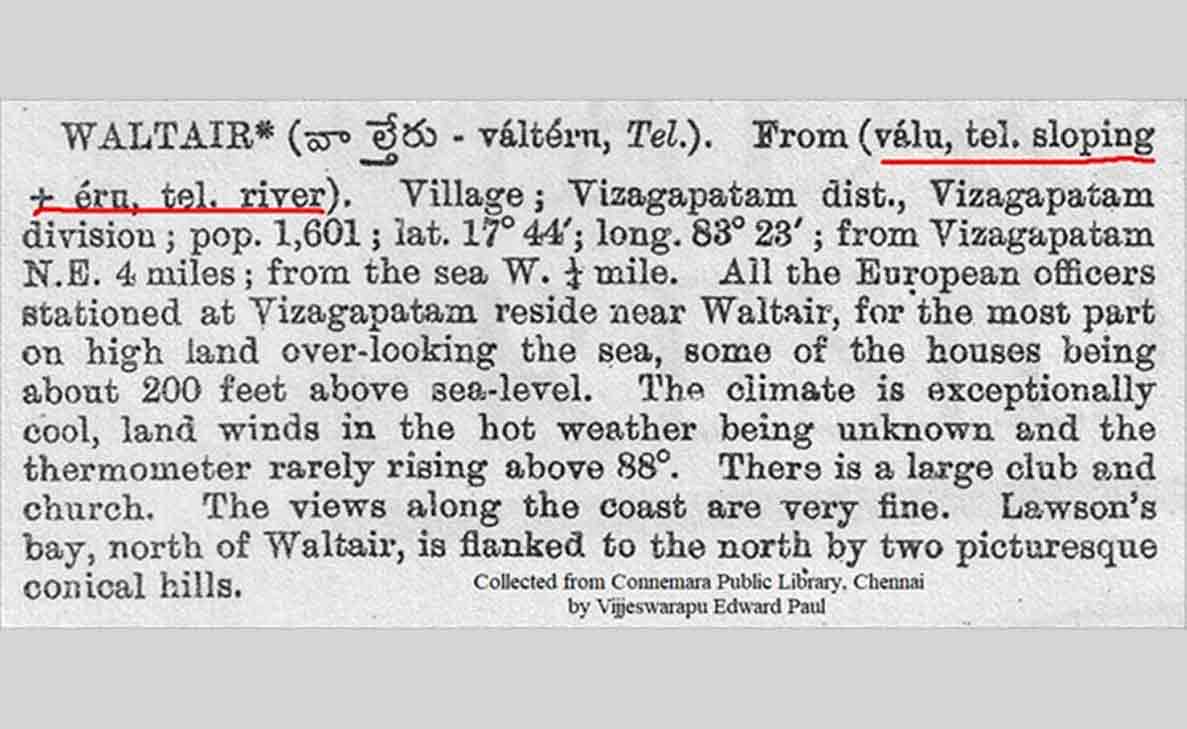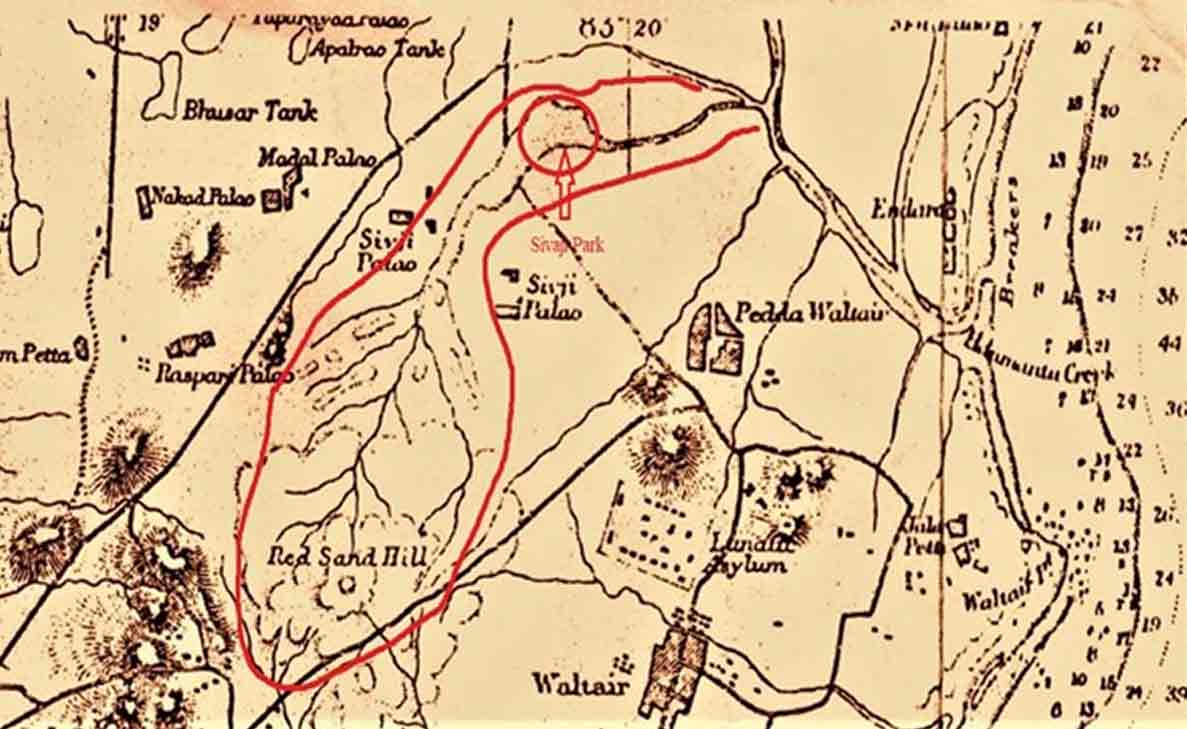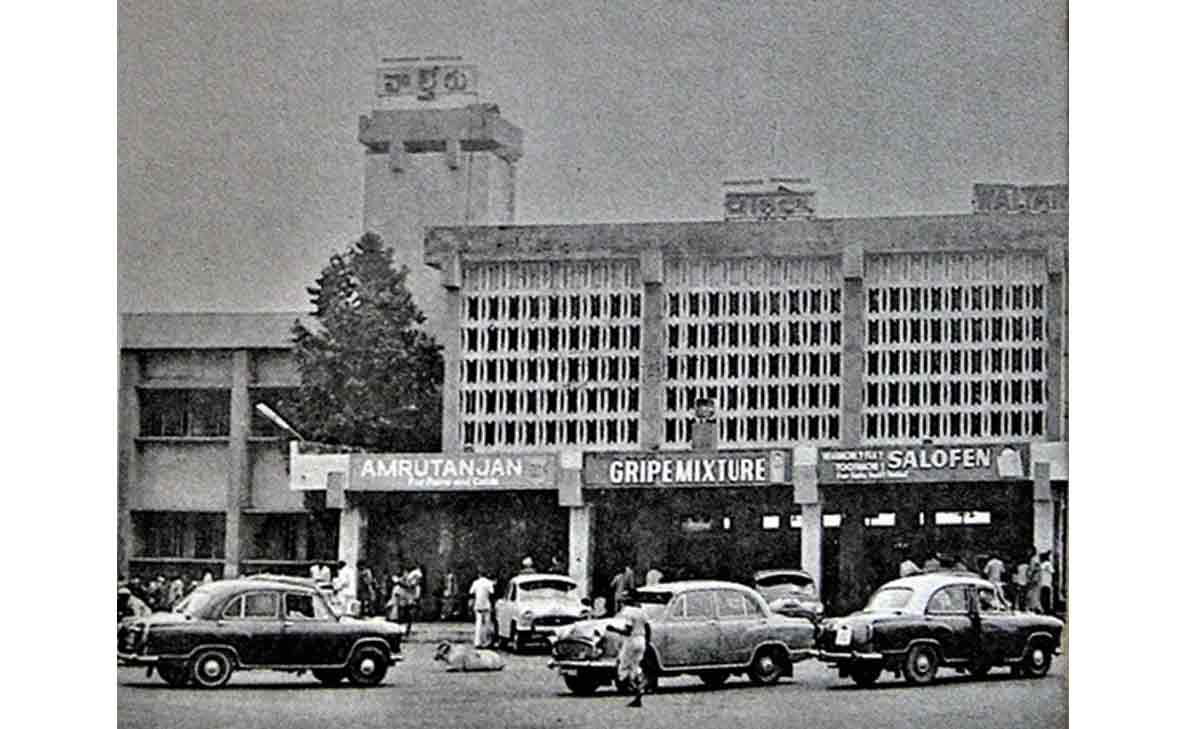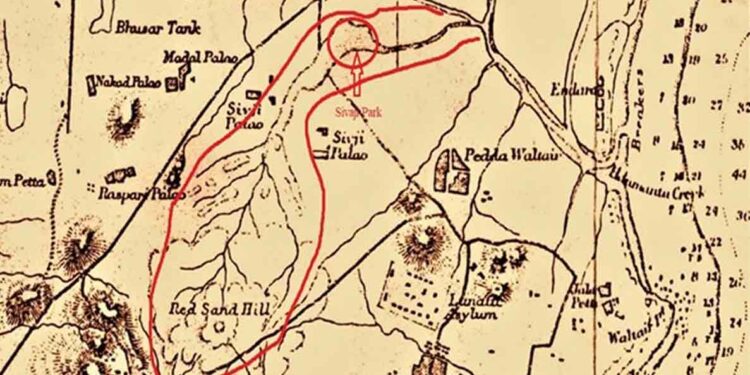Waltair, famously divided as Chinna and Pedda Waltair is the residential area in Visakhapatnam. It is very well known for the Waltair Club established by the British and the numerous coffee shops where the locals love to hang out. The name Waltair is famously believed to have come from the British Collector who worked here in the 18th Century. Vijjeswarapu Edward Paul, an enthusiast of the city’s history proves this etymology of Waltair in Visakhapatnam wrong and brings to you the real story behind the name of Waltair.

It is usually believed that Waltair got its name from some high-ranking Civil or Military British official. But in fact, it is a pure Telugu word but mispronounced and thereby misspelt by the English. There used to be a storm water drain, locally called Valuteru Gedda. Written in Telugu as “వాల్తేరు”. It should have been written in English as Valteru but it was wrongly spelt as “Waltair”. The same spelling remained in usage for more than two centuries and continues to be used as such even now.
In the olden days, two hamlets by the name Chinna Valteru and Pedda Valteru were developed on the East side of the stream. The highlands, south of these Pedda and Chinna Valteru, the British called as Waltair Highlands or Waltair uplands. Waltair uplands being an elevated place than the old town and also being cooler the British officers preferred to have their residences there. British started occupying Waltair uplands in 1727.
During the British time, a large area which included Pedda and Chinna Waltair was demarcated and formed into an estate, named as the Waltair estate and auctioned for revenue collection purposes. All the area within that Waltair estate in British history is what we call as Waltair in Visakhapatnam today.
Waltair which got its name from Valuteru Gedda (Stream) originated as small ravines on the Northern slopes of the present Siripuram – Visakha Eye Hospital Road. As seen in the map of the red sand hills below is the originating place for the Valuteru drain. It started there as a storm water drain travelled through the present Engineering College and Hostels, Pitapuram colony, Sivajipalem, and MVP colony. It then joined the stream that was coming from Hanumanthavaka and merged with the sea at Lawson’s bay. As seen on the map, at a place between two small hamlets both known as Sivajipalem, it got widened for a good length on its way north, then becomes narrower before meeting the Hanumanthavaka. The wider part near the Sivajipalem appears to have been a deeper water body.

The development of the city and the construction activities around its course were the cause of the Valuteru stream’s disappearance today. The opening up of Andhra University Engineering College and the construction of Hostel buildings which started from 1955 onwards destroyed the Red Sand Hills. Later the development and construction activities in the present Pitapuram Colony and MVP Colonies cut off the channels feeding the large water body of the Valuteru near Sivajipalem. As a result, the water body has gone dry.
Once a water body goes dry, then it becomes a natural place for dumping garbage and waste. This dried-up lowland was used as a dumping ground by the municipality for some years, maybe a decade or two. The local residents raised a hue and cry about the dumping and the authorities were forced to shift that dumping yard to some far-off place. Finally, the water body of the Valuteru Gedda was developed into a beautiful park named Sivaji Park. With this, the Valuteru Gedda got obliterated without leaving any trace.
This Valuteru Gedda gave its name to a few great institutions in Visakhapatnam. A Club started by the British officers in 1883, with land purchased from the proprietors of Waltair estate was named “Waltair Club” and continues with the same name even today.
During the construction of the Railways in 1893, the railway station that was nearest to the Waltair estate was named Waltair Railway station. Another station which was near Visakhapatnam city was named Vizagapatnam Railway station. In the 1970s the Vizagapatam Town Railway station was closed. Later in the 1980s Waltair station was renamed as the Visakhapatnam Station.
Before Waltair Railway Station was renamed as Visakhapatnam, the name of the station was written in Telugu as “వాల్తేరు”.

When Andhra University was shifted from Vijayawada to Visakhapatnam, in 1930 it was established in the former Waltair estate and its address was given as Andhra University, Waltair. With the PIN code for postal address becoming necessary for postal communication the address is now given as Andhra University Visakhapatnam 530003. However, all the certificates issued by the University still mention the place of issue as Waltair.
The original name from history, Valuteru Gedda has disappeared, but its modified name Waltair still continues in Visakhapatnam.










Discussion about this post